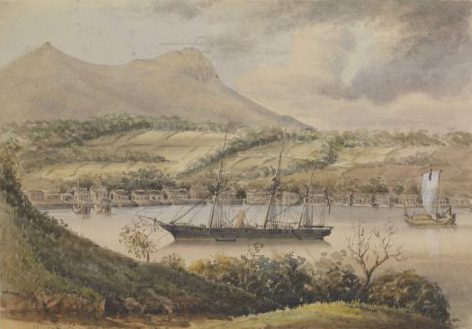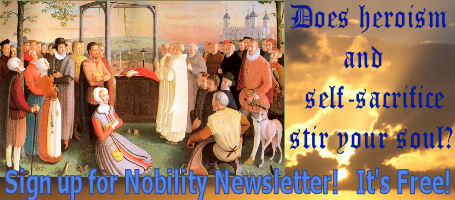During this period three persons of rank were also put to death in the kingdom of Firando. A distinguished nobleman, named Caspar Nixiguenca, was living at Tamanda, of which he was the ruler. He married his daughter, by the name of Mary, to the son of Condoquisan, the governor of the island. But the latter being an idolater felt reluctant to have in his house a daughter-in-law professing the Christian religion. He ceased not to make efforts to pervert her, until one day, no longer able to suffer his importunities, Mary left his house and went to the house of her father. The idolater, annoyed at her flight, wrote to her to return to his house under pain of being denounced to the king, who would not tolerate the Christian religion in his states. The pious young woman answered him that her religion forbade her to return, and that as she was a Christian, far from being afraid of death, she desired it.
Condoquisan, to revenge himself, hastened to accuse Caspar to the king, who was a profligate pagan. Caspar was at once summoned by the bonzes, who were charged with proceeding against the Christians. Scarcely had he reached the place when the soldiers threw themselves upon him to tie him, and when he asked them why they did so, the bonzes said to him: “You are a Christian, and it is for this reason that you are condemned to death.” “If it is for this reason,” rejoined the nobleman, “bind me as much as you please, and do not fear that I will offer resistance.”
On the following morning the governor came to visit him, exhorting him to deny the faith if he wished to save his life as well as the life of his wife and his sons, who had also been arrested. Caspar answered that he was ready to die for Jesus Christ, and that he asked for no other grace than that he might die on the cross. The governor replied that for this the consent of the prince was needed. Then he had him conducted to the place where he was to be beheaded, and wished as a mark of honor to execute him himself.
On the same day the officers of justice proceeded to his house, where Ursula, his wife, and John, his son, were guarded. They wished to make them believe that they were going to lead them into exile with Caspar; but they were already aware of his martyrdom, and departed full of joy, not desiring anything so much as to die for the faith. The journey finished, a soldier suddenly drew his saber and struck Ursula with it with great violence; but the weapon slipped and did not kill her. The saintly woman had thus time to fall on her knees. Invoking Jesus and Mary, she received the second blow which deprived her of life. John, who was in advance, turned back on hearing the noise; and seeing his mother die, he also knelt as she had done, and had his head also cut off.
This triple martyrdom happened November 14, 1609; Caspar and Ursula were both fifty-four years old, and John was twenty-five. There was no sentence pronounced against Mary, nor against the young wife of her brother.
Rev. Eugene Grimm, ed. Victories of the Martyrs, vol. 9, The Complete Works of Saint Alphonsus de Ligouri (New York: Benzinger Brothers, 1888), 343–5.
Short Stories on Honor, Chivalry, and the World of Nobility—no. 782











